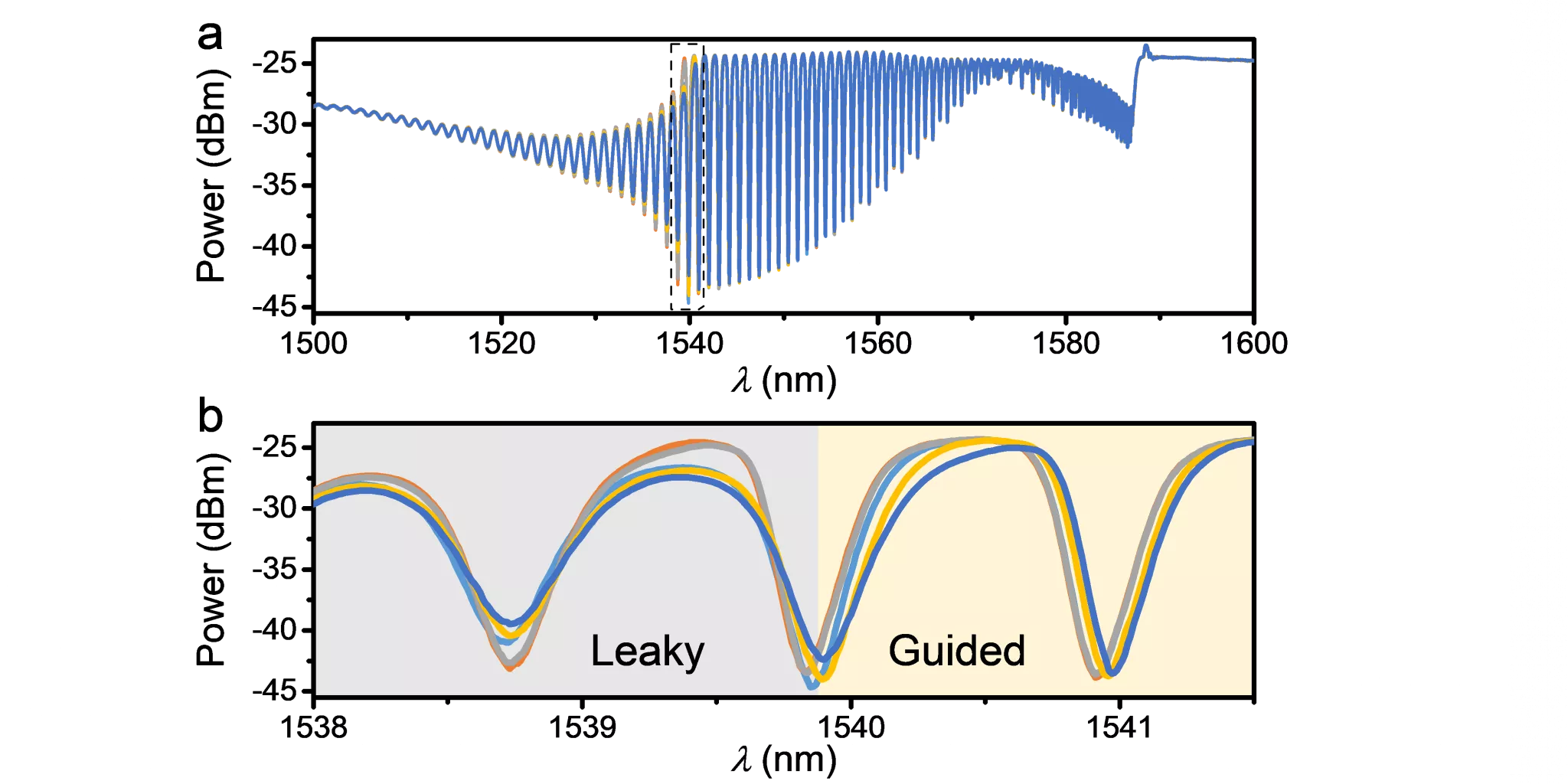New possibilities for monitoring batteries’ health
Batteries are now essential in today's world, and the scientists are constantly looking for better batteries. One of the main challenges of today’s batteries is to make them "greener". Toward this target, in the last few years, various research have been highlighted to make accurate estimates of the states of charge and health of batteries. In this context, fiber optic sensors have emerged in the battery’s world due to their various advantages. Their technical capabilities make them promising candidates for the study of electrolyte’s degradation. Among these optical fibers, fiber Bragg grating (FBG) sensors have already been able to monitor temperature and pressure under real-life conditions when placed in a battery. However, in such a configuration, the light is confined within the core of the fiber and does not allow for many resonances, preventing an interaction with its surroundings.
In a recent paper, Huang et al., an international team from the CSE (Solid State Chemistry and Energy) lab have overcome this challenge and developed an operando technique to monitor the state of electrolyte in real working conditions. By tilting the grating plane of FBGs, the authors obtained another sensor, the TFBG for tilted fiber Bragg grating. Unlike FBG, TFBGs are sensitive to the surrounding refractive index (RI), allowing them to have real applications in (bio-)chemical detection and in the field of electrochemistry, such as supercapacitors.

On the figure: full (a) and enlarged (b, dashed rectangle in a) TFBG spectra selected in an electrolyte. The changes in the amplitude of the leakage modes as well as the wavelength shifts of the guided sheath modes are clearly visible, implying the variation of the IR of the electrolyte during the charging process.
As a proof of concept, the study was performed on the Na3V2(PO4)2F3/hard carbon (NVPF/HC) sodium-ion 18650 cells containing various electrolyte combinations. To calibrate the sensitivity of the TFBG as a function of its refractive index, the sensor was immersed in sucrose solutions with different concentrations (from 0 to 50 wt%), which give different refractive indices. The authors demonstrated how a single TFBG is capable of monitoring temperature and refractive index simultaneously inside the battery, providing the feasibility to distinguish the electrolyte decomposition pathways. In addition, this study, for the first time, accessed the turbidity of the electrolytes, which could be used for tracking electrolyte deterioration. Last but not least , the collected refractive index and turbidity signals showed linear correlations to cells’ capacity loss.
These results for TFBGs highlight a more simplified, explicit, and reproducible method for measuring refractive index than their predecessors. Furthermore, by evaluating electrolyte turbidity as well as identifying (electro)chemical reaction pathways during SEI formation, TFBGs are in line with the latest developments in battery technology. Lastly, by generalizing the methodology to a few electrolyte formulations, the authors provide new data to artificial intelligence to better understand and predict the aging of cells.
The study and its conclusions can be found in detail here.
About the author:

Dr. Jiaqiang Huang is a post-doc in the CSE laboratory (Collège de France, Paris), dedicated to battery sensors and the unraveling of thermal and chemical events inside batteries. After an academic background (Bachelor and PHD) in Mechanical Engineering at Shanghai Jiao Tong University and the Hong Kong University of Science and Technology, respectively, Jiaqiang had a first post-doc experience on microparticle anodes for Na- and K-ion batteries at Hong Kong Polytechnic University, after which he joined Collège de France in 2018. As part of the RS2E, Jiaqiang has published three first-author papers in Nature Energy, Journal of Electrochemical Society, and Energy & Environmental Science, and is still working on two more papers to be released soon. With his post-doc ending next week, Jiaqiang already has new plans; indeed, he has setting up his own group (https://antngg.wixsite.com/my-site) at the Hong Kong University of Science and Technology (Guangzhou) as an assistant professor from January 2022. He will continue the research on battery sensors by converging electrochemistry, optics, and data science to improve batteries in terms of safety, reliability, predictability and performance.
From this experience at RS2E, Jiaqiang Huang will remember: “I am very proud of being a member of the RS2E and it is always nice and inspiring to discuss science with the people from RS2E”.